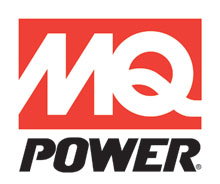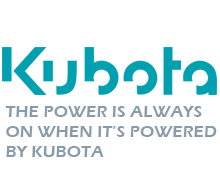Brushed vs. Brushless Generators
- By Jackson Carter
- Dec 2, 2019
Do you have a generator that functions just fine, but no way to convert the energy the way you need? Do you already have an alternator, but need a newer, better one to meet your daily needs? Depending upon what jobs you’re planning for your power equipment, you’ll have to make a choice on what best suits your needs – a brushless or a brushed alternator?
On the surface, the difference between brushless and brushed alternators may seem quite simple, but looking a little closer, there’s a lot more to it than the simple presence of brushes.
What is an alternator?
An alternator is an electric generator that takes and converts mechanical energy into electrical energy. It creates mechanical energy by spinning a magnetic field using a rotor to create energy. After creating enough mechanical energy with the magnetic field and rotor, the alternator begins its main job of converting the energy. Now the next question you may be asking is, what is mechanical and electrical energy? Mechanical energy is the sum of potential energy and kinetic energy, which in more simple terms means the energy created by movement. The amount of energy created depends on the position of any given object, as well as the speed that it’s moving at, meaning that the amount of energy created in an alternator depends on how fast the rotor inside is spinning.
Electric Energy, Direct Currents, and Alternating Currents
Electric energy is when electric charges, called electrons, are moved around at a high speed. The higher that speed is, the more electrical energy the electrons carry. As you may remember, one of the purposes of an alternator is to transfer mechanical energy into electric energy, but the main job of an alternator is to change a direct current into an alternating current. A direct current, or DC, is a flow of electricity that does not change direction. It flows one way, and is most commonly used for batteries, large power supplies, motors, and large scale high-voltage jobs. An alternating current, or AC, is an electrical flow that can change or reverse directions. An alternating current is most often used to power businesses, homes, and household appliances like televisions, fans, and kitchen supplies from a wall socket.
Brushed Alternators
A brushed alternator uses brushes (or carbon brushes) to help conduct electricity through an alternator or generator. The brushes act as an electrical contact to help move the current from the alternator to that which needs power. They do this by transferring the current as they spin with the rotor of the alternator. Although brushed alternators are handy for moving electrical current, they require a lot of maintenance. Brushed alternators have many moving parts that function together, and if even one of these parts becomes damaged or malfunctions, it can affect the rest of the alternator’s parts. The carbon, or sometimes graphite brushes, wear down over time and collect dust, meaning that they will have to be replaced every few years. This is money and potential time lost to brush replacement, two things no one wants to lose. For these reasons, brushed alternators are better suited for smaller, more short-term use, instead of full time, heavy duty jobs. Brushed alternators are much cheaper for the initial purchase than brushless ones, but often in the end due to required repairs, may not be the best choice for most people.
Brushless Alternators
On the other hand, brushless alternators are better suited for more long-term, constant usage because there are no brushes to replace or fix, and have fewer internal parts that can be damaged. You may be asking yourself, “How do they move the electrical current then?” A brushless alternator has two sets of rotors that spin together to generate and transfer the electrical current. But how does it accomplish moving the current without brushes? A brushless alternator has a second, smaller generator on the end of the equipment instead of brushes, which it uses to transfer any electrical current. This is an immediate advantage over a brushed alternator because there are no brushes to replace or repair, saving you long term money and time. A disadvantage of a brushless alternator, however, is the much higher initial cost, as opposed to a brushed alternator. This is mostly because of the higher amount of materials used in a brushless alternator. Brushless alternators, however, are also more suited to be your primary alternator/generator and are more capable of long-term use. In the long run, you will save money by buying a brushless alternator, but keep in mind that it’s an investment because of the higher cost when compared to a brushed alternator.
Whether you’re looking for a quick and cheap short-term brushed alternator, or a more advanced and expensive long-term solution brushless alternator, always keep in mind how much power you need to generate as well as your budget. You shouldn’t feel pressured into spending more money just for a long-term alternator, but the worst-case scenario is underestimating just how much power your job requires. Use our power calculator to determine your power needs, or contact a trained Absolute Generators specialist to determine if a brushed or a brushless generator is right for your operation.







